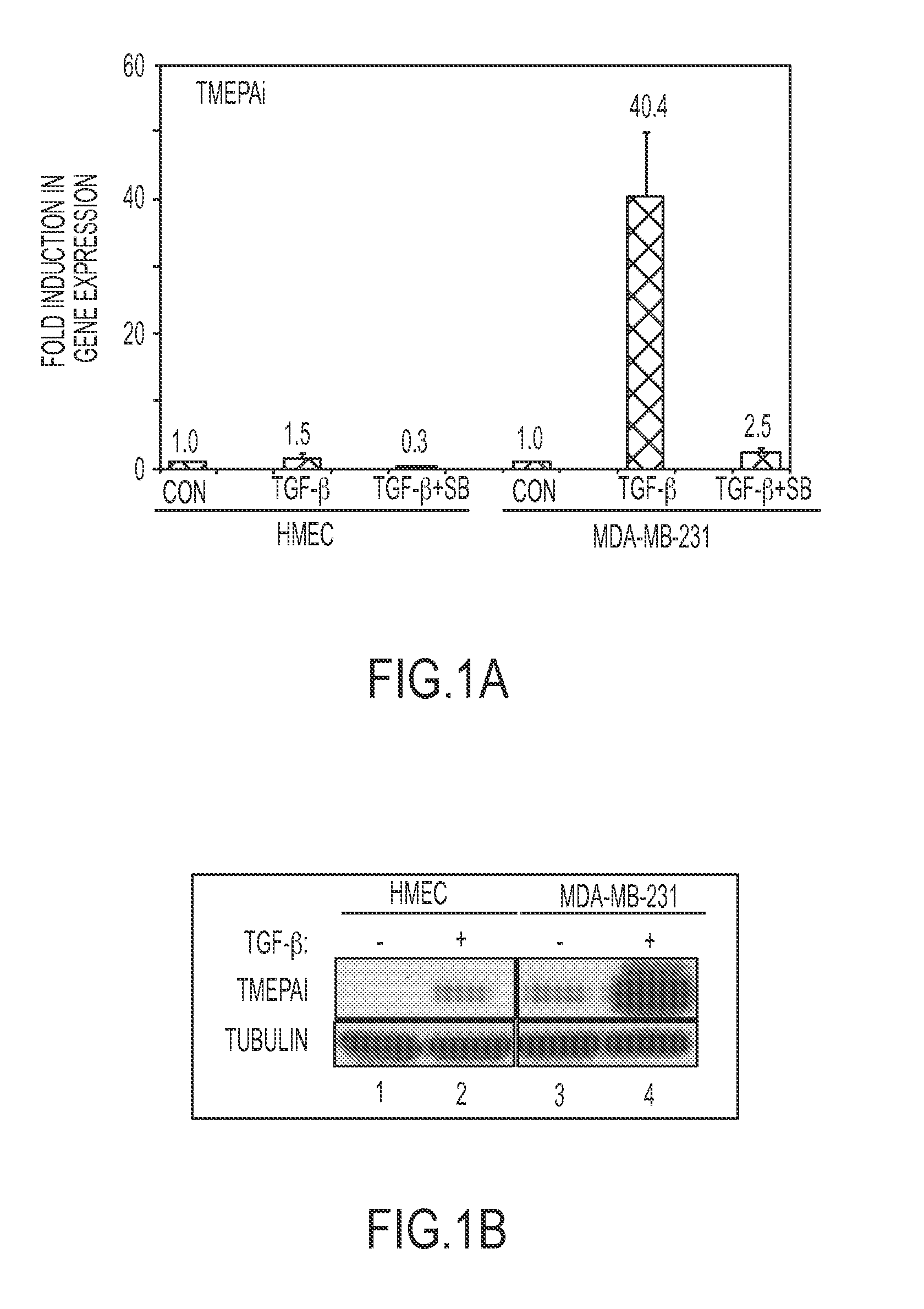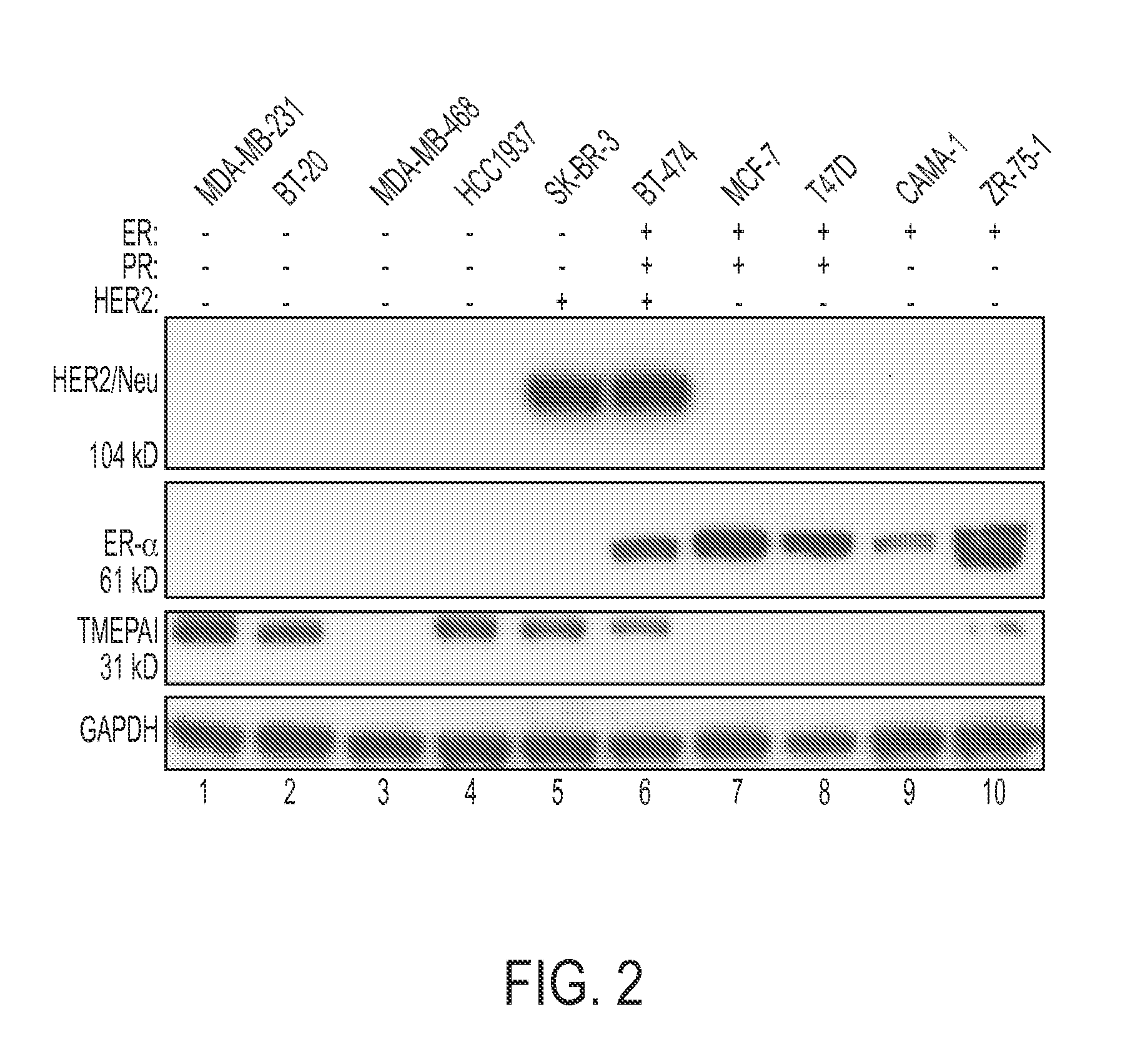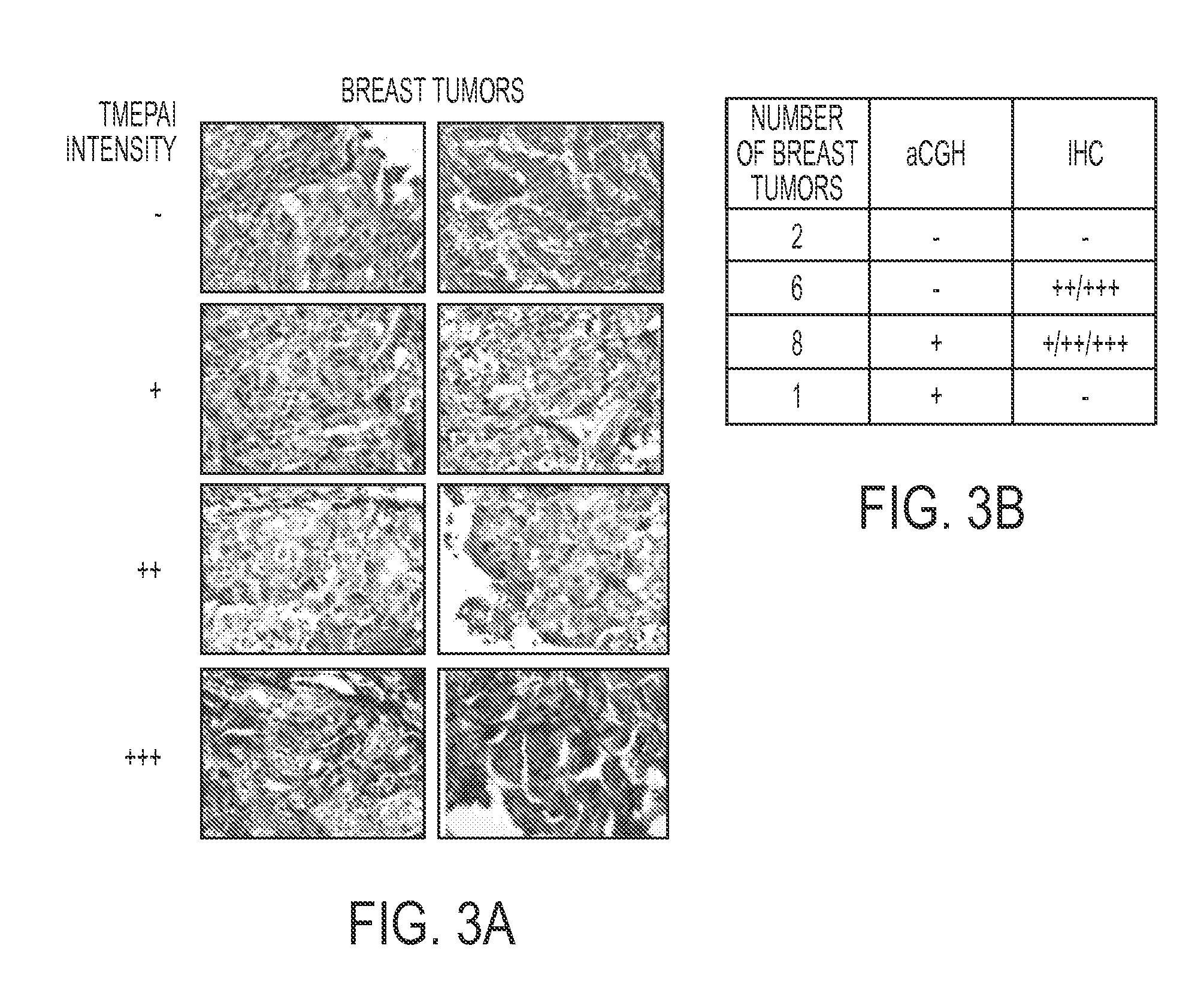Methods for classifying a cancer as susceptible to tmepai-directed therapies and treating such cancers
a cancer and tmepai technology, applied in the field of pathology and oncology, can solve the problems etc., and achieve the effects of reducing tumor burden, increasing survival length, and slowing of tumor growth
- Summary
- Abstract
- Description
- Claims
- Application Information
AI Technical Summary
Benefits of technology
Problems solved by technology
Method used
Image
Examples
example 1
Materials and Methods
[0172]Preparation of CLST-NP.
[0173]Nanoparticles were prepared from lecithin emulsions. To prepare vehicle (Veh-NP) and celastrol (CLST-NP)-loaded nanoparticles, 10 mg of celastrol in ethanol was added into a glass vial containing 4 mg of lecithin and evaporated the ethanol completely using nitrogen gas. Tween 20 in deionized water was added drop wise method to a final concentration of 2% (w / v) and heat it in magnetic stirrer hot plate at 50-55° C. with small magnetic flee till milky dispersion, less opaque but not clear solution formed. Same procedure was repeated without drug to make vehicle loaded lecithin nanoparticle (Veh-NP or Veh). Both Veh-NP and CTR-NP were filtered through series of 0.4μ, 0.2μ, 0.1μ membranes and added 5% dextrose as lyoprotectant. Freeze dried the total volume of both Veh-NP and CLST-NP and dissolved in deionized water. Quantification of nanoparticle was done at 425 nm. The nanoparticle was observed under scanning electron microscopy ...
example 2
Results
[0174]TMEPAI Expression in Normal Mammary Epithelial Cells Vs Breast Cancer Cells.
[0175]Transmembrane Prostate Androgen-Induced (TMEPAI) mRNA (>40-fold) and proteins (˜9-fold) were greatly induced in MDA-MB-231 cells that are exposed to the tumor suppressive cytokine TGF-β (FIGS. 1A-B) within 6 h of treatment. In contrast, normal human mammary epithelial cells (HMEC) poorly induced TMEPAI RNA and proteins (FIGS. 1A-B) in response to TGF-β. The inventors tested the expression of TMEPAI in various breast cancer lines by immunoblotting. While most aggressive triple-negative (MDA-MB-231, BT20, HCC1937) cells expressed TMEPAI protein, the ER +ve but non-invasive, MCF-7, T47D, and CAMA-1 cells did not significantly express this protein (FIG. 2). Moreover, TMEPAI is also expressed by aggressive HER2-positive breast cancer cells that either coexpress estrogen receptor (BT-474) or not (SK-BR-3) (FIG. 2).
[0176]TMEPAI Protein Expression in Breast Tumors.
[0177]Earlier, the inventors demo...
PUM
| Property | Measurement | Unit |
|---|---|---|
| concentration | aaaaa | aaaaa |
| Tm | aaaaa | aaaaa |
| size | aaaaa | aaaaa |
Abstract
Description
Claims
Application Information
 Login to View More
Login to View More - R&D
- Intellectual Property
- Life Sciences
- Materials
- Tech Scout
- Unparalleled Data Quality
- Higher Quality Content
- 60% Fewer Hallucinations
Browse by: Latest US Patents, China's latest patents, Technical Efficacy Thesaurus, Application Domain, Technology Topic, Popular Technical Reports.
© 2025 PatSnap. All rights reserved.Legal|Privacy policy|Modern Slavery Act Transparency Statement|Sitemap|About US| Contact US: help@patsnap.com



